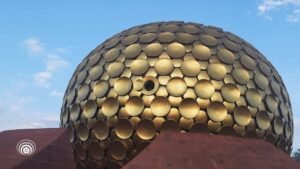Sri Aurobindo highlights the significance of physical education and its role in the comprehensive development of an individual. The physical aspect of human consciousness is governed by method, order, discipline, and process. While matter may lack plasticity and receptivity, it can be transformed through detailed organization that is both precise and comprehensive. The interdependence and interpenetration of all domains of being should be taken into account in this organization.
Physical education encompasses three main aspects: control and discipline of bodily functions, integral and harmonious development of all body parts and movements, and correction of defects and deformities. This education should commence from birth and continue throughout life, as it is never too early or too late to begin.
From the very first days of a child’s life, certain aspects of physical education can be applied, such as establishing good habits regarding food, sleep, and hygiene. Parents should have a minimum knowledge of the human body, its structure, and functioning, and gradually teach children to observe and control the functioning of their internal organs. Bad habits related to positions, postures, and movements should be corrected early on, as they can have long-term consequences.
Children should be taught the importance of simple and healthy food, eating according to hunger, and developing a taste for nourishing substances without indulging in greed or gluttony. The child’s instinctive knowledge of what is good and necessary for their body should be respected, while also distinguishing between desires and needs. It is essential to avoid using food as a means of coercion or punishment.
Cleanliness and hygienic habits should be instilled in children without instilling fear of illness. While there should be no fear of illness, children should understand that being ill is a sign of weakness and inferiority, not virtue or sacrifice. The importance of a well-built, robust, and balanced body should be emphasized, avoiding the romantic notion that brilliance is found in weak bodies. Feigned illness to manipulate others’ attention and sympathy should not be encouraged.
Regular exercise and outdoor games should be an integral part of a child’s education, as they contribute to good health and physical development. Medicine should be used sparingly, and the natural healing power of the body should be respected and supported through healthy habits.
Sufficient sleep is crucial for a child’s development, with the number of hours varying according to their age. Pushing children to constant activity or depriving them of rest and relaxation is detrimental to their developing nervous system. Children should be given time for relaxation and taught the art of relaxing muscles and nerves. Activities should be freely chosen rather than imposed, and the hours of rest necessary for proper bodily function should be maintained.
The education of children should also emphasize the importance of physical strength, balance, and beauty. Every human body has the potential to establish harmony among its parts and movements, and a rational method of physical culture from an early age can help manifest this beauty. The ideal of beauty should be cherished for its own sake, not merely to please others or seek admiration.
Even if physical education has been neglected during childhood or youth, it can begin at any age and continue throughout life. However, correcting bad habits, rigidities, and malformations may require additional patience and perseverance. By keeping the ideal of beauty alive and maintaining a goal of harmonization and transformation, one can progress towards physical well-being and the realization of beauty.
In summary, physical education is a vital aspect of holistic development, encompassing control and discipline, harmonious development, and correction of defects. It should begin at birth and continue throughout life, promoting good habits, proper nutrition, hygiene, exercise, rest, and the cultivation of physical strength, balance, and beauty.




